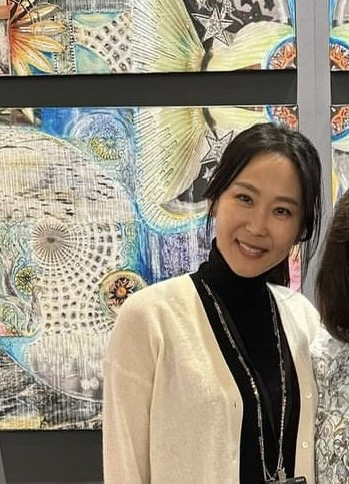The Hidden Factors in Art Appreciation
- Alice Sung

- Jun 17
- 4 min read
Updated: Jul 6
Key Elements That Make Art Appreciate in Value
Artist's Career Trajectory and Recognition
The most significant factor in art appreciation is the artist's professional development. Works by artists who achieve major museum exhibitions, receive critical acclaim, or win prestigious awards consistently outperform the market. I've watched pieces by emerging artists multiply in value after their first museum solo show or inclusion in the Venice Biennale.
Market Scarcity and Demand Dynamics
Basic economics apply to art markets. When an artist's work becomes scarce, whether due to death, reduced output, or increased institutional collecting—prices typically rise. I've seen estates strategically manage supply to maintain price stability, while living artists who flood the market often see values decline.
Historical and Cultural Significance
Artworks that capture pivotal cultural moments or represent important art historical movements tend to appreciate consistently. Pieces that document social change, introduce new techniques, or challenge artistic conventions often become more valuable as their historical importance becomes clear.
Provenance and Exhibition History
A strong provenance (the artwork's ownership history) significantly impacts value. Pieces previously owned by notable collectors, featured in major exhibitions, or published in scholarly catalogues carry premium valuations. I always emphasize to clients that documentation and exhibition history are as important as the work itself.
Medium and Condition Considerations
The medium an artist chooses significantly impacts long-term market performance. Oil paintings and bronze sculptures have traditionally commanded higher prices and shown stronger appreciation due to their perceived permanence and historical prestige. However, contemporary markets are increasingly embracing diverse mediums—video art, photography, and mixed media works by established artists now achieve substantial prices at auction.
Pathways to Blue-Chip Gallery Representation
Securing representation with top-tier galleries requires strategic career development and often takes years of consistent work.
Building a Strong Studio Practice
Blue-chip galleries seek artists with mature, distinctive voices and consistent output. This means developing a recognizable style while continuing to evolve conceptually. Galleries want to see depth—not just individual pieces, but bodies of work that demonstrate artistic growth and market potential.
Educational Credentials and Residencies
While not mandatory, MFA degrees from respected institutions and prestigious residencies provide credibility and networking opportunities. These programs connect artists with curators, critics, and other professionals who can facilitate introductions to gallery directors.
Exhibition History Progression
Successful artists typically follow a progression: group shows at smaller galleries, solo exhibitions at mid-tier spaces, museum group shows, and finally, major solo exhibitions. Each step builds credibility for the next level. I advise artists to be strategic about their exhibition choices—quality over quantity matters.
Critical Recognition and Media Coverage
Art world attention from respected critics, art publications, and curators signals market readiness to galleries. Reviews in Artforum, Art in America, or features in major newspapers can spark gallery interest. Social media presence, while important, cannot substitute for serious critical engagement.
Collector and Institutional Support
When serious collectors and museums begin acquiring an artist's work, galleries take notice. This demonstrates market confidence and suggests potential for future sales. Building relationships with curators and collectors through studio visits and art fairs is crucial.
Strategic Timing and Market Positioning
Galleries consider how an artist fits within their roster and current market trends. They seek artists who complement their existing program while offering something distinctive. Understanding a gallery's aesthetic and collector base helps artists target appropriate venues.
The Importance of Networking
Networking within the art community is vital for any artist seeking representation. Connecting with other artists, curators, and gallery owners can lead to opportunities that might not be publicly advertised. Attending exhibitions and art fairs is an excellent way to build these relationships.
Diversifying Your Portfolio
Procuring blue-chip representation is greatly aided by an artist’s ability to showcase a versatile portfolio. A diverse range of work demonstrates an artist's potential to appeal to a broader audience and indicates adaptability — a valuable trait in the ever-evolving art market.
Recent Success Stories: Artists Who've Gained Recognition
Several artists have made significant career leaps in recent years, demonstrating these principles in action:
Cannupa Hanska Luger
Cannupa Hanska Luger exemplifies how socially engaged art can achieve institutional recognition. The National Gallery of Art acquired his "Mirror Shield Project" (2016) in 2024, which originated as a response to the Dakota Access Pipeline protests at Standing Rock. His work demonstrates how artists can build careers by addressing urgent social issues while maintaining artistic rigor.
Cecily Brown
Cecily Brown continues to see her market strengthen with major institutional support. The Dallas Museum of Art acquired her triptych "The Splendid Table" (2019–20) as their first Brown painting, demonstrating how established artists maintain momentum through consistent museum acquisitions.

These examples illustrate that recognition often comes to artists who combine technical skill with compelling subject matter, whether addressing contemporary social issues, cultural heritage, or art historical traditions. Success rarely happens overnight, but artists who understand these dynamics and work systematically toward their goals have the best chance of achieving lasting market success. For collectors, recognizing these patterns early, before they're reflected in prices represents the greatest opportunity for both financial return and the satisfaction of supporting emerging talent.
---wix---


